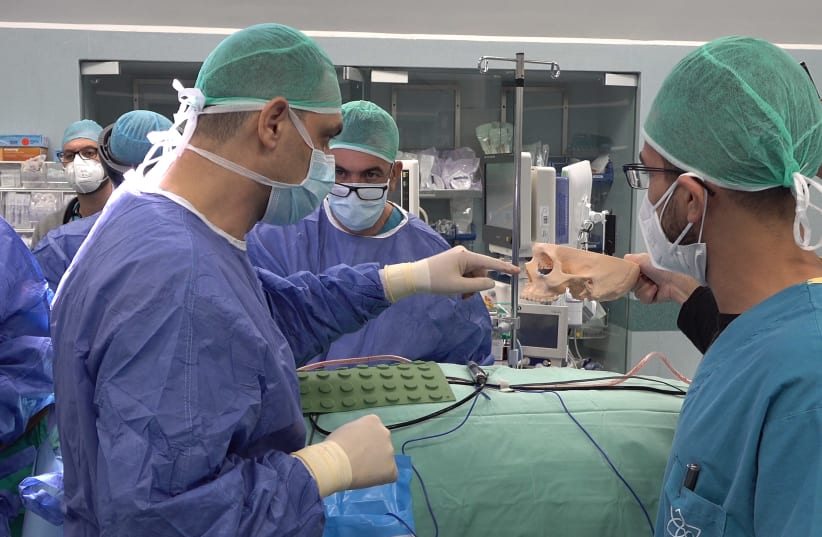“The future is already here,” according to Prof. Masad Barhoumm, director-general of Galilee Medical Center, after a team of Israeli doctors from his medical center successfully completed the first-ever repair of a fracture in the floor of an eye socket using augmented reality (AR) and three-dimensional technology.
The surgery, which was performed on a 31-year-old resident of the Galilee, was led by Prof. Samer Srouji of Galilee Medical Center’s Center for Oral and Maxillofacial Surgery in partnership with doctors from Sheba Medical Center, Tel Hashomer.
The patient had been severely injured in his face, fracturing his left eye socket, resulting in double vision and impairing the aesthetics and symmetry of his eyes.
“The innovative technology utilizing a 3D printer and augmented reality resulted in both a particularly accurate execution of the operation, and a significant reduction in time,” said Srouji.
To perform the surgery, the medical center designed a plate according to the patient’s computerized tomography (CT) scan. The plate accurately reproduced the shape of the floor of the eye socket, according to the “projection” of the healthy side on the injured side, through use of software to build a three-dimensional model of his skull.
The plate was printed on titanium and prepared for insertion. To accurately position it under the patient’s eye, doctors used AR.
One of the doctors wore Microsoft “HoloLens” glasses that were connected to the computer software containing the patient’s models – both the skull and the plate design. The model was virtually and accurately placed over the patient’s head through the glasses, which enabled the surgeon to place the plate in place correctly in real time.
Microsoft describes its HoloLens glasses on its website as providing “the most comfortable and immersive mixed reality experience available, with industry-leading solutions that deliver value in minutes – all enhanced by the reliability, security, and scalability of cloud and AI services from Microsoft.”
While wearing the glasses, users can see intricate details on 3D images easily and comfortably and touch, grasp and move holograms in ways that feel natural. The holograms respond like real objects, the website describes.
The eye surgery only took an hour-and-a-half. Following recovery of several days, the patient was released home. His CT scans showed that the plate was placed accurately and optimally.
Galilee Medical Center’s 3D Point of Care unit has been developing in recent years, Srouji said. He noted that in the past year, despite the novel coronavirus, the unit has stepped up its efforts, collaborating closely with Sheba to promote the use and implementation of 3D technologies in all types of surgeries.
Some of Sheba’s AR technology was transferred to the north to support the medical center’s efforts in this particular surgery.
“This technology will contribute to improved clinical outcomes and reduce repeated imaging and surgeries,” Prof. Srouji said.
“I congratulate Prof. Srouji and the department’s team on a first-of-its-kind operation in the world,” Barhoum added, “which fills us with great pride.”
